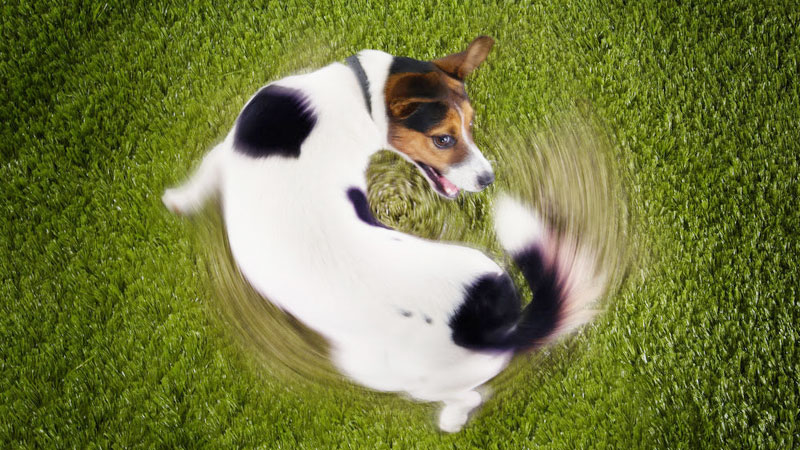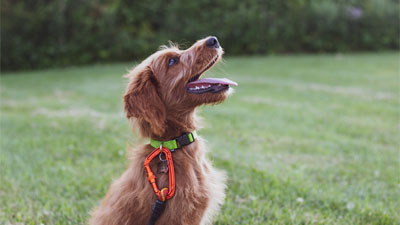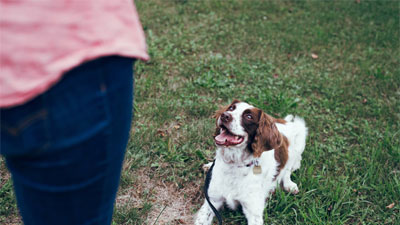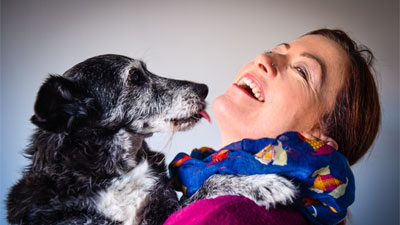- Size
- Smallest
- Small
- Small to Medium
- Medium
- Large
- Giant
- Characteristics
- Smartest
- Hypoallergenic
- Fluffy
- Best Guard
- Best Family
- Best for Kids
- Low Shedding
- Healthiest
- Police Dogs
- Most Calm
- Quietest
- Color
- White
- Black
- Grey
- Brown
- Blue
- Red
- Coat
- Hairless
- Short
- Long
- Origin
- Japan
- China
- Australia
- Germany
- Italy
- United States
- France
- Group
- Hound
- Terrier
- Herding
- Toy
- Working
- Sporting
Training Your Dog to Spin: A Step-by-Step Guide

Teaching your dog new tricks isn't just a fun way to spend time together; it's an excellent way to stimulate their mind, improve their obedience, and strengthen the bond between you. One of the charming and relatively simple tricks you can teach your dog is to spin or twirl on command. This playful behavior can entertain friends and family while showcasing your dog's intelligence and adaptability.
In this comprehensive guide, we will take you through the step-by-step process of training your dog to spin. With patience, consistency, and positive reinforcement, you can easily train your furry friend to spin in circles on cue.
Steps to Train Your Dog to Spin
1. Initial Positioning and Treat Lure:
Start with your dog in a standing position. If your dog isn't accustomed to standing on command, it's beneficial to teach that command first.
Hold a treat near your dog's nose and guide it in a circular motion away from their body, encouraging them to follow the treat's movement with their nose.
2. Completing the Spin:
Continue leading the treat in a circular path around your dog's body until they complete a full spin or twirl.
As your dog completes the circle, use a verbal cue like "spin" or "twirl" to associate the action with the command.
3. Reward and Reinforcement:
Immediately after your dog finishes spinning, offer verbal praise such as "good" or "yes," followed by a treat to reinforce the behavior positively.
4. Repetition and Practice:
Repeat these steps multiple times during short, engaging training sessions throughout the day. Aim for about five-minute sessions, several times daily.
Introducing Directional Commands
1. Adding Specific Directions:
Once your dog understands the basic spin command, introduce directional cues like "right spin" or "left spin."
Use the treat lure to guide your dog in the specific direction while incorporating the respective verbal command.
2. Focused Training on Directions:
Concentrate on one direction at a time to ensure your dog comprehends and distinguishes between "right spin" and "left spin" before moving forward.
3. Mixing Directions and Reinforcement:
Once your dog confidently spins in both directions, mix up the commands within a single session to reinforce understanding and responsiveness to each command consistently.
Troubleshooting and Refining Behavior
1. Shaping Behavior:
If your dog struggles with completing a full spin, use shaping techniques by rewarding incremental progress toward the desired behavior.
Reward smaller steps toward the full spin, gradually shaping the behavior until your dog completes a full circle.
2. Addressing Challenges:
If your dog encounters difficulties or starts making mistakes, backtrack to a previously successful step and practice it for a few sessions before progressing.
3. Preventing Overtraining:
Avoid overtraining your dog; limit training sessions to prevent fatigue or disinterest. Pay attention to signs of discomfort, and if your dog seems overwhelmed, take breaks or stop training.
Conclusion and Final Thoughts
Teaching your dog to spin is an enjoyable activity that strengthens your relationship and showcases your dog's ability to learn new behaviors. Remember, not all dogs will grasp the trick immediately, and that's perfectly normal. The key is to remain patient, maintain a positive training environment, and celebrate your dog's progress, no matter how small.
Always prioritize your dog's comfort and well-being during training sessions, avoiding overexertion or prolonged training periods. If your dog doesn't show enthusiasm for spinning or seems uncomfortable, consider focusing on other enjoyable activities or tricks that align better with their preferences.
You May Also Like
 Dog Training TipsTeaching Your Dog the "Sitting Pretty" or "Beg" Trick
Dog Training TipsTeaching Your Dog the "Sitting Pretty" or "Beg" Trick Dog Training TipsTeaching Your Dog to Wave Goodbye: A Step-by-Step Guide
Dog Training TipsTeaching Your Dog to Wave Goodbye: A Step-by-Step Guide Dog Training TipsTeaching Your Dog the Classic Trick: Shake Hands
Dog Training TipsTeaching Your Dog the Classic Trick: Shake Hands Dog Training TipsTeaching Your Dog How to Back Up: Step-by-Step Guide
Dog Training TipsTeaching Your Dog How to Back Up: Step-by-Step Guide Dog Training TipsTeaching Your Dog to Speak: A Comprehensive Guide
Dog Training TipsTeaching Your Dog to Speak: A Comprehensive Guide Help & AdviceTraining Your Dog to Give Kisses: A Step-by-Step Guide
Help & AdviceTraining Your Dog to Give Kisses: A Step-by-Step Guide